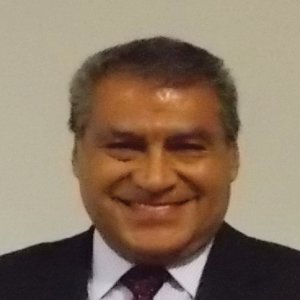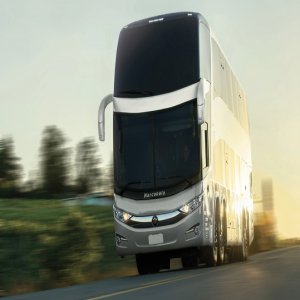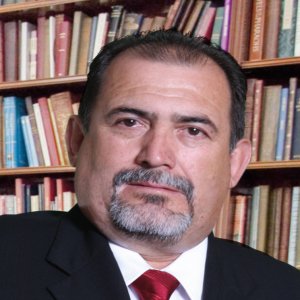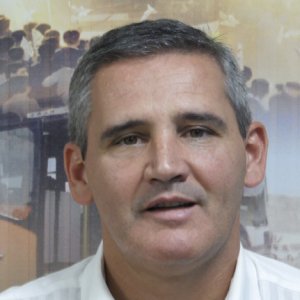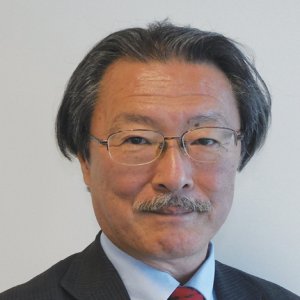Attacking a Familiar Market with New Requirements

STORY INLINE POST
Q: In April 2015, Ford announced an investment of US$2.5 billion for the construction of two new facilities in the country. What factors made Mexico the right place for this investment?
A: The announcement of this investment is an important step in the history of 90 years of Ford in Mexico. At present, Mexico is the fourth largest producer of vehicles for the company, as well as the fourth largest producer of engines and the second largest country providing auto parts to Ford’s global facilities. By opening this new chapter, we hope to provide even better products, which can now include new engines and transmissions, in order to serve Ford customers worldwide.
Q: How has the last decade of slower sales impacted Ford’s vision for Mexico?
A: Ford is here for the long run and is as committed to Mexico as ever. We have not changed our view of Mexico, and we still approach the market by scaling our business to match the trends in demand. The plan is to keep producing and growing in Mexico, either through more sales, greater production, or a combination of the two. In line with this strategy, we have made our pricing process more transparent throughout our portfolio. There is now a connection between our incentives, marketing programs, and prices, resulting in an increase in credibility and a spike of customer satisfaction. We created this initiative as a consequence of several abnormalities in the market, but now we intend to apply it to all our near-future releases.
Q: To what extent has Ford been involved in automotive financing in Mexico, and how could these services help Ford to grow in the country?
A: Our dealers offer financing products from various banks and financial institutions, as well as solutions from our own brand, Ford Credit, which alone covers the vast majority of vehicles that are financed within our dealerships. The financing penetration we have seen is currently between 50% and 55%, while the rest of our sales are usually paid for in cash or with in-house dealer financing.
The government has made some progress in this area by using Financial National (NAFIN), which is helping financing companies take more risks and covering part of the losses when contracts go south. Even so, this has had limited impact and most programs have a restricted timeframe, so it has been difficult to pinpoint any sustainable growth. Ford is currently developing alternative programs for customers who do not have a steady income. However, the economy suffers from an extremely high level of informality, and until that level is reduced, it would be very difficult to achieve the penetration we see in more developed economies. Financing costs should be lower, but that is determined by the risk that financing companies perceive.
Nevertheless, financing is growing in Mexico and we think there is huge potential to grow vehicle sales within the domestic market. Given that 50% of the Mexican population is younger than 25, we need to be prepared to tackle that challenge. New consumers in the market will be looking for affordable ways to buy a car, and that can be achieved through different financial tools. The more banks that go after the same pie, the stronger the competition will be, which will greatly benefit the consumer by creating lower rates, more available products, and more convenient financing schemes. Ford has been in the global market for 112 years, so we welcome any competition.
Q: Traditionally, young consumers do not display the same brand loyalty as older clients. How does Ford convince these new buyers to choose its cars?
A: The only way to grow our market share and make our business stronger is to build up our brand. Brand positioning provides the ability to charge more for the same product, not only in the automotive sector, but in almost every single industry in the world. However, just being present in the customer’s mind does not make you a strong company; you have to increase the buyer’s willingness to purchase your product over your competitor’s. As more competition and brands enter Mexico, Ford needs to work much harder to increase its brand power. In order to achieve this, we are adding more content to our products and offering them at much more competitive prices. As an example, the Ford Fusion Titanium is more equipped than any other premium brand, but at a significantly lower price.
There is a trend toward downsizing, but Mexico is still behind other countries. In Europe, compact cars represent more than 85% of the market, while Mexico remains at 60%. Nevertheless, compact cars will become more popular, eventually representing 60% of the global consumption. Fortunately, Ford has a rather successful small car portfolio, and we are launching new products which will meet the affordable, economical, safe, and high-quality demands of the Mexican consumers.
Q: What strategies led Ford to become the Best Global Green Brand in 2014, and how is this commitment to the environment reflected in the company’s marketing strategies in Mexico?
A: One of our global standards is to have the most unique and affordable product, with the best quality and the lowest possible fuel consumption, covering the same distance while protecting the environment. Innovation is critical for this kind of performance. We were the first company to produce a system to connect a cellphone to the car, and to control the critical features of the vehicle through voice commands. That was not just for the sake of innovation and to be high-tech, but to create a safer environment for the driver. We were also one of the first companies to introduce downsizing, which involved producing smaller engines and increasing their power using turbochargers. We are planning to become a leader in innovation and we have just announced the opening of our research center in Palo Alto. Our goal is to have over 150 engineers working on different projects by the end of 2015, most of them directed toward connectivity, V2X, and V2V strategies. These connected vehicles will be aware of the roads, nearby vehicles, and infrastructure, creating a safer drive while reducing traffic, and even searching for available parking spaces.
Q: How is Ford trying to raise safety awareness in Mexico, other than the safety features included in its vehicles?
A: Safety is a corporate priority and one of our positioning pillars, as we aim to provide the safest car in the market within every segment. We are trying to do what we can to remain affordable, while simultaneously providing the highest level of safety possible. Aside from airbags, we have ABS in most of our products and we are looking to expand that to our entire portfolio. We also invest a lot in Research & Development (R&D) to ensure that our products are the safest in their class. Additionally, we are working with the government on their recent regulation to make airbags a standard requirement for all vehicles, further enhancing safety in our country. There is still much to be done in terms of infrastructure, education, and law enforcement, and most accidents in Mexico are caused by one of these three factors. At the same time, we will continue to work on the best features for our vehicles. Our Expedition and Navigator models were recently awarded with the top safety rating in their class in the US. We are pleased to announce that Mexican engineers developed the systems in the Expedition, which makes them responsible for this five-star rating. Furthermore, our plan is to manufacture all those components in Mexico, along with other plants in our network.
Q: Not all OEMs established in Mexico have developed a strong relationship with the local supplier network. What could be the reasons behind this disconnected attitude, and how could Mexico work to change this mindset?
A: This is determined by the amount of time and resources dedicated to the network’s development, not just by the suppliers, but also by the manufacturers. The level of sophistication in these plants has to be just as high as their clients’ in order to deliver the right results. Nowadays, we are investing almost US$12 billion in local auto parts and components, with a large portion of this dedicated to domestic plants, but the rest is exported to different manufacturing sites around the world. The quality of Mexican production is exactly the same as in the US or Europe, and we are experiencing exactly the same phenomenon with the people we are hiring.
Our recruitment process is quite sophisticated and we have developed strategies to attract only the best talent. We work with universities to create specifically tailored programs to develop the best trainees. Therefore, we work on a very stringent and comprehensive training program for engineers, in order to make sure they are prepared to work in the Ford Product Development department. Some of the innovations that these young engineers have created are simply incredible and they have even surprised some of our senior engineers in the US. Furthermore, some of these products are now being implemented worldwide, including a parametric model to design new components in approximately 20 minutes, considerably improving our previous timeframe of three to four weeks. Our approach is truly demanding in terms of what we expect from our engineers, but we are pleased about the quality of service we are getting from our production operations in Mexico.
